#psychikos
Explore tagged Tumblr posts
Text

Abandoned in autumn
#abandoned#athens#photography#autumn#november#old building#old door#Palio psychiko#morning walk#architecture
47 notes
·
View notes
Note
Hello, how was your New Year's celebration? I would like your opinion on the new player in this fandom. Yes, because as if we didn't have enough of those good friends desperate for attention, very close drivers also desperate for attention, tour guides who changed their lives, and fans who chase jobs as extras in all of Sam's works, we now have a new character, Valbonesi's 'good friend' for over ten years, who decided to park himself in the corner of this fandom. How far can this chaos go, and in the name of what?
Dear New Player Anon,
My New Year celebration was fab, thank you, with friends and Someone perched on a rooftop in Psychiko. And champagne: once a year is a good average for me.
Fireworks were less interesting this year, I'd say. I've seen better and there was a bit of fog:

And now for your ask. I suppose you mean, ahem.... this (bless her heart, she could not help herself and had to throw a tantrum involving me a couple of posts earlier - I am not even sorry)?

I think the proof is in the pudding, Anon. How convenient might this 'friend''s apparition be, when all you need is a bit of self-pity circus and Dorothy Dixon (thank you, Australia!), on New Year's Eve?
Other than that, not obsessed, not stalking. God forbid.
PS: people will ask. Nope: this is the only account I have. I simply switched the browser and turned off cookies. Rather nicely done. I am an unapologetic lurker, alright: but guess what, Fandom - so is she.
41 notes
·
View notes
Text
Psychics
Hello! Today we’re going to be talking about psychics and psychic abilities. Please note this is just a quick overview and there are plenty of books that go more in-depth.
What is a Psychic?
The word "psychic" is derived from the Greek word psychikos ("of the mind" or "mental"), and refers in part to the human mind or psyche (ex. "psychic turmoil"). The Greek word also means "soul". In Greek mythology, the maiden Psyche was the deification of the human soul. The word derivation of the Latin psȳchē is from the Greek psȳchḗ, literally "breath", derivative of psȳ́chein, to breathe or to blow (hence, to live).
A psychic is a person who claims to use extrasensory perception (ESP) to identify information hidden from the normal senses, particularly involving telepathy or clairvoyance, or who performs acts that are apparently inexplicable by natural laws, such as psychokinesis or teleportation. Although many people believe in psychic abilities, the scientific consensus is that there is no proof of the existence of such powers, and describes the practice as pseudoscience. The word "psychic" is also used as an adjective to describe such abilities. Psychics have a natural ability—which can be trained and developed—to "read" the energy surrounding an individual, object, or space, living or inanimate. Just as there are those born with an incredible talent for sports or mathematics, there are others born with an incredible talent to tap into the unseen.
How long have Psychics been around?
French astronomer and spiritualist Camille Flammarion is credited as having first used the word psychic, while it was later introduced to the English language by Edward William Cox in the 1870s.
Elaborate systems of divination and fortune-telling date back to ancient times. Perhaps the most widely known system of early civilization fortune-telling was astrology, where practitioners believed the relative positions of celestial bodies could lend insight into people's lives and even predict their future circumstances. Some fortune-tellers were said to be able to make predictions without the use of these elaborate systems (or in conjunction with them), through some sort of direct apprehension or vision of the future. These people were known as seers or prophets, and in later times as clairvoyants (French word meaning "clear sight" or "clear seeing") and psychics.
Spirit communication became widely banned and stigmatized during the spread of Christianity in the 13th century; religious leaders claimed that psychics were in commune with the devil. Indigenous beliefs and practices were cast out by colonists in the 16th century, and many cultures were forced to follow institutionalized religion. However, certain figures also rose to worldwide popularity—one being Nostradamus who famously made some seriously sizable predictions.
Spiritualism grew in the mid-19th century. Throughout this era, followers held public demonstrations where psychics connected with the spirit world, delivering messages to the audience, messages that confirmed their loved one's presence in the afterlife and held valuable information to help the querent. These days, psychics are allowed to practice openly, and it is not uncommon that your friends, family member, or colleague consults with a psychic regularly. Famous psychics in popular culture include John Henry, Theresa Caputo, Sylvia Brown, and James Van Praagh. They appear on talk shows, write best-selling books, make appearances, and perform public readings to packed auditoriums.
Psychic Abilities
Psychic abilities are better described more so as senses. There are 7 known psychic senses: Clairvoyance (clear seeing), clairsentience (clear feeling), clairaudience (clear hearing), claircognizance (clear knowing), clairscent (clear smelling), clairgustance (clear tasting), and clairtangency (clear touching). Many psychics may have more than just one psychic sense and some may have several.
4 notes
·
View notes
Text

«Την ώρα της ακολουθίας, όταν ο γέροντας άκουγε το όνομα του Χριστού, είχες την αίσθηση ότι άνοιγε ένα φράγμα ψυχικό και πλημμύριζε η ύπαρξή του από τον έρωτα, που χρόνια ζούσε η καθαρή του καρδιά. Στο άκουσμα του ονόματος της Παναγίας, σεισμική δόνηση στο στασίδι του. Έσκυβε ευλαβικά το κυρτωμένο σώμα. Την ώρα της Λειτουργίας ένιωθες ότι κάθε λόγος γινόταν λαβίδα αγία και ο ... Περισσότερα εδώ: https://romios.gr/tin-ora-tis-akoloythias-otan-o-gerontas-akoyge-to-onoma-toy-christoy-eiches-tin-aisthisi-oti-anoige-ena-fragma-psychiko/
#Θαύματα#Ορθοδοξία#ΠΝΕΥΜΑΤΙΚΑΩΦΕΛ��ΜΑ#αίσθηση#ακολουθίας#άκουγε#άνοιγε#γέροντας#είχες#ένα#όνομα#όταν#ότι#την#της#Το#του#φράγμα#Χριστού#ψυχικό.#ώρα
1 note
·
View note
Text

Ψυχικό τραύμα: Συνέπειες εξίσου ορατές με ένα χτύπημα στο κεφάλι; https://health.rodos-island.gr/psychiko-travma-synepeies-exisou-orates-me-ena-chtypima-sto-kefali/
0 notes
Text
The Society Of Preventive Psychiatry.
The Society of Preventive Psychiatry is having a live celebration in Psychiko, Athens, Greece, in the presence of Ministers of the Greek Government, the President of the Academy of Athens, and the Dean of Athens University, with the following Professors of Psychiatry as speakers- Prof. George Christodoulou (Athens University), Former President, WFMH; Prof. Marina Economou (Athens University); Prof. Nikos Tzavaras (University of Thrace); Prof. Nikos Christodoulou (University of Thessaly).
WHERE: Greece
WHEN: 27th September 2023.

#Society of Preventive Psychiatry#greece#world mental health day#conferences#mental illnesses#mental health condition#mental health awareness
0 notes
Note
I hope this isn’t too many 😅 but for the character asks, your fav pmd character, your fav transformers character, and your fav mp100 character?? I’m sorry if that’s too many! 😅
ooh thank you!!! lets goo!!!
For pmd mmmmh could be any of the future trio but yknow what imma do Dialga
Sexuality Headcanon: IRRELEVANT
Gender Headcanon: Time Has No Gender lol
A ship I have with said character: I don't really ship Dialga with anyone honestly. Yknow that post on tumblr about a vampire that'd "nephew-zoned" anyone that try to make a move on them because they've been around for so long that they don't even think about dating someone about centuries younger than them? That's Dialga, they're as old as time itself and romance never crossed their mind, they see a regular pokemon they go "aww" and thats it.
A BROTP I have with said character: WITH PALKIA they never interacted in the game but I'd love them to have a complicated long distance best friends sibling-like relationship. Dialga is relatively chill compared to Jock God Palkia and I like that dynamic. You can even spice it up with angst when Dialga go/is about to go/went for a long time Primal and Palkia can feel it.
A NOTP I have with said character: mmmmh like I said I dont really vibe with Dialga being shipped in general but I GUESS I especially dont with any of the future trio
A random headcanon: The Future that shouldve disappeared is now Dialga's very own personal emotional support timeline (we may never know why Arceus did it but hey. A gift's a gift even if it doubles the work). They do feel responsible for everything that's happened and everyone there and while guilt isnt exactly something Gods experience, they are suuuuper indulgent and in touch with the first few handful of pokemon there. They tolerate that the first new town is at the feet of Temporal Tower in the now-not-so-Hidden Highlands and actually go there pretty frequently. Once society in that timeline is well on it's way to be rebuilt and when they want a metaphorical break from their neverending duty they go there to chill for a while.
General Opinion over said character: Funny how much your opinion of someone can change with one (1) replay. I honestly was neutral on Dialga before but just thinking of the potential of 20ft tall divinity interacting with the world around them and just getting a smoothie down the street thanks to in-game mechanic while still having reality-altering powers, especially in the context of pokemon mystery dungeon with a pantheon as large as canon legendary pokemon, is so good to me. Plus they have a immense impact on the plot so there's still material to work with. Also side-note Dialga used to be my fav legendary when I was a lil kid so. FULL CIRCLE BABEYYY
For transformers I have multiple favs but its gonna be Rodimus
Sexuality Headcanon: I mean. Its a homonormative society. (Its a way for me to say I dont really have one)
Gender Headcanon: he uses he/him but theyre giant robots from outer space. Gender's an afterthought.
A ship I have with said character: OKAY so in the mtmte continuity I dont?? actually ship Roddy with anyone? I think he's fine on his own romantically speaking. Call me out on my bad tastes but I don't want him to be in a relationship. In cyberverse on the other hand I do like him and Soundwave (who funnily enough I ALSO dont generally ship with anyone in any other continuities)
A BROTP I have with said character: oh god theres so many characters for both continuities yknow what in both Im gonna go with Whirl. In mtmte they have great dialogues and in cyberverse they have that apocalypse found family vibe
A NOTP I have with said character: MMMMMMMMMMMegatron 😔
A random headcanon: Primus/The matrix likes him best and he May Or May Not be the true Prime. He deserves nice things. Rising sign is capricorn
General Opinion over said character: yknow someone called him once "lover of losers and misfits, patron saint of the lost and lonely" and ive been thinking about that sentence ever since. I love Roddy a lot and I wish there was. more of him in general. A star is born babey 💖.
for mp100 imma pick Koyama
Sexuality Headcanon: G to the A to the Y
Gender Headcanon: ehhhh dont really have one honestly
A ship I have with said character: with Sakurai lol
A BROTP I have with said character: with Tsuchiya!! They have a brother/sister relationship. But imma be real theres one for almost all of the 7th division.
A NOTP I have with said character: Dont Ship Adults With Kids Please. But also i guess im not a big fan of shipping him with anyone thats not Sakurai
A random headcanon: guy is a MEAN cook. He got it from his mama who loved him very much, shes the one who literally named him "Kindness". But unfortunately he ran from home in his late teens 😔
General Opinion over said character: BASTARD THAT GOT BETTER my favorite kind. Love him dearly and I had the best conversations talking about him and met incredible people. Love the underrated found family including him and the rest of the 7th division. BIG comfort character I swear Im gonna be invested immensely in him again when season 3 drops.
#THANK YOU AGAIN YOURE THE BEST!!!!#and dont worry its wasnt too much!!! i just had. a lot to say#LONG POST#ask meme#psychikos
3 notes
·
View notes
Photo

Palo and Friederike, c. 1937-1938. I presume this was taken at their villa in Psychiko.
#queen frederica#princess friederike of hanover#princess frederica of hanover#frederica of hanover#king paul i#king paul#paul of greece#prince paul of greece#king pavlos#kingdom of greece#psychiko#greece#greek royal family#glucksburg#hohenzollern#paul i of greece#king paul i of greece#couple#vintage
17 notes
·
View notes
Photo




Residence, Psychiko, Athens / Greece, [1970-1972] _ Architects: Antonis & Vangelis Stylianidis.
1st Level _ 2nd Level _ Elevation from the garden _ Elevation from the road _ Total built area: 567 sq.m.
"Antonis & Vangelis Stylianidis: Architecture 1972-1993", Crete University Press, 1995.
#Residence#Psychiko#Athens#Greece#Antonis & Vangelis Stylianidis#1970-1972#Crete University Press#1995
1 note
·
View note
Photo

Paul Shark Latest Arrivals 🎖 Piraeus Glyfada Online giannopoulos.gr #paulshark #paul_shark #giannopoulos #piraeus #pireas #glyfada #glyfadagreece #athens #greece #newarrivals #newarrival #fashion #fashionblogger #fashionista #fashionstyle #fashionmen #fashionbloggers #piraeusport #piraeusbynight #piraeusgreece #faliro #palaionfaliron #vouliagmeni #voula #kavouri #varkiza #sarwnida #kifisia #psychiko #europe #eshop #style #mensstyle #menstyle #mensstylist (στην τοποθεσία GIANNOPOULOS - HOUSE OF QUALITY)
#fashionblogger#piraeusgreece#glyfada#pireas#fashionmen#piraeus#paul_shark#athens#menstyle#style#glyfadagreece#vouliagmeni#kifisia#giannopoulos#faliro#voula#europe#newarrivals#palaionfaliron#psychiko#greece#sarwnida#piraeusport#mensstylist#varkiza#fashionbloggers#piraeusbynight#kavouri#newarrival#paulshark
2 notes
·
View notes
Text

Beautiful old house in palaio psychiko, Athens
16 notes
·
View notes
Photo
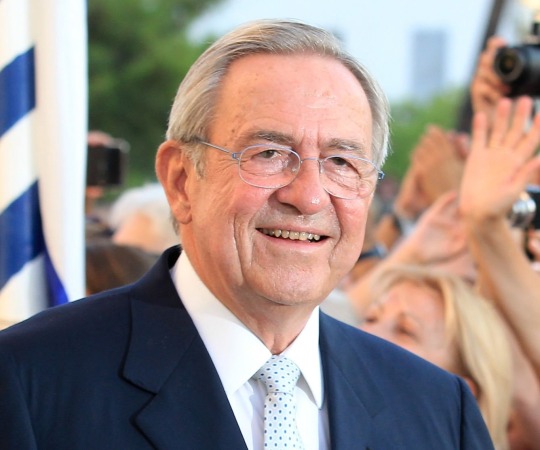

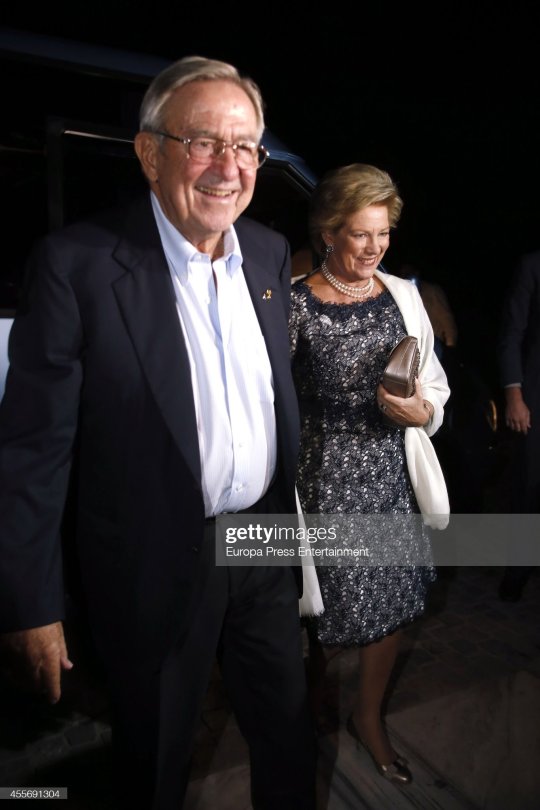
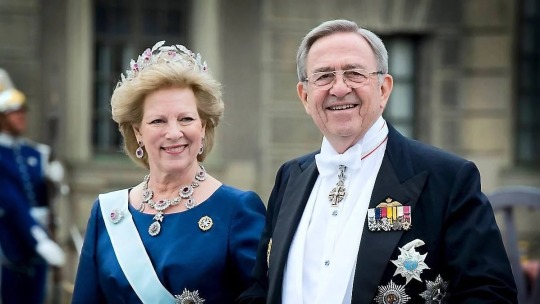

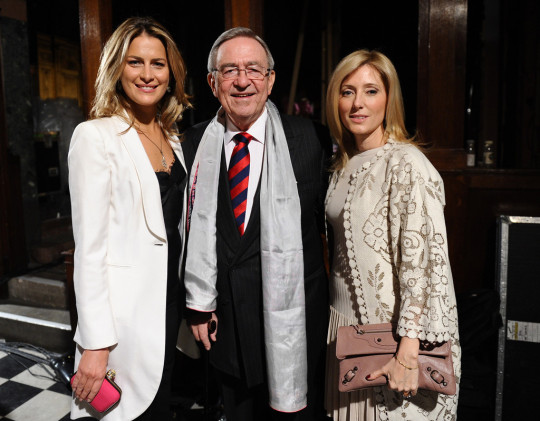
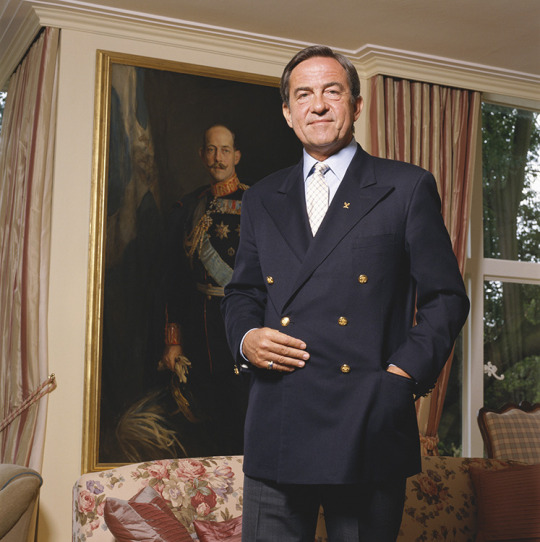
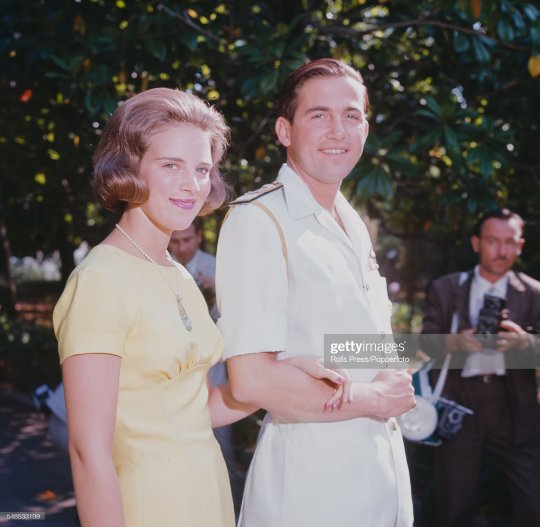

Constantine II of Greece Born: June 2, 1940, Psychiko, Greece Physique: Average Build Height: 5′9″ (1.75 m)
Constantine II reigned as the last King of Greece, from 6 March 1964 until the abolition of the Greek monarchy on 1 June 1973. After spending World War II in exile in South Africa, Constantine returned to Greece in 1946. When his father became King Paul I in 1947, Constantine became crown prince; he succeeded to the throne upon his father’s death on March 6, 1964. When a military coup forestalled the election he was planning for that year, he immediately fled to Rome with his family. The military regime retained control of the monarchy and appointed a regent in Constantine’s place, granting the king a free return if he so desired. On June 1, 1973, the military regime ruling Greece proclaimed a republic and abolished the Greek monarchy. A referendum on July 29, 1973, confirmed these actions. Constantine, who had protested the vote of 1973, accepted the result.
The former king is married with five children, enjoys classical music (opera and ballet), spending time with his grandchildren and re-visiting favorite places in Greece with his family. He's also a former competitive sailor and Olympian, winning a gold medal in the 1960 Rome Olympics in the Dragon class. Personally I think he is cute (and interesting) and if he wants to experience man on man sex, I am more than willing to help make that dream a reality for him. I'm nice like that.
#Constantine II of Greece#Constantine II#mydaddywiki#royalty#greek royalty#greek royal family#mydaddywiki royalty#king royal person
51 notes
·
View notes
Photo







King Constantine II of the Hellenes was King of Greece, from 6 March 1964 until his death. His Majesty was the only son of King Paul and Queen Frederica of Greece.
Born: June 2, 1940, Psychiko
Died: January 10, 2023, Athens, Greece
Spouse: Queen Anne-Marie of Greece (m. 1964-2023)
Parents: Frederica of Hanover, Paul of Greece
10 notes
·
View notes
Photo


Αβάνα,Ψυχικό
12 notes
·
View notes
Text
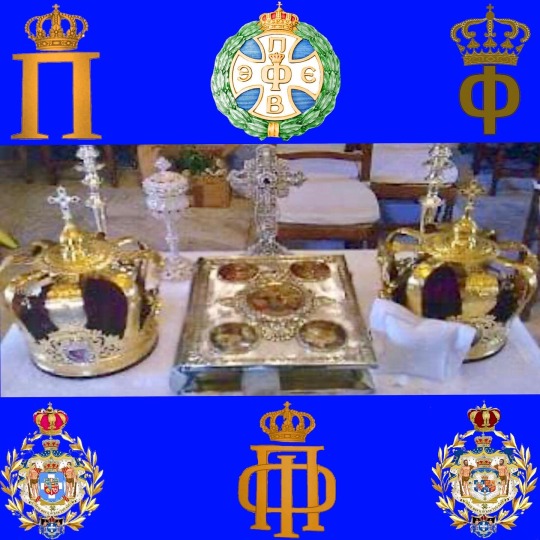

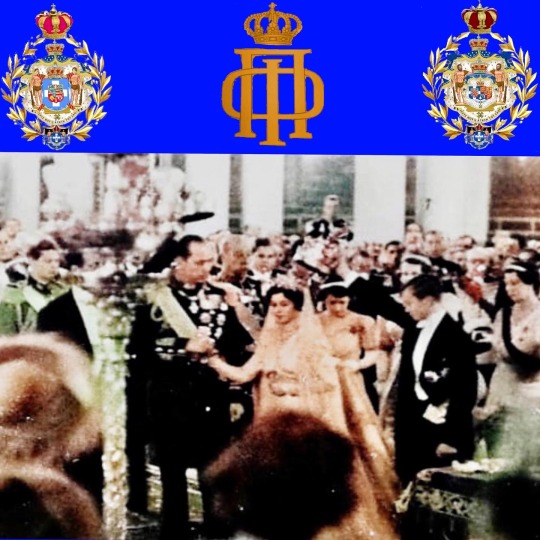
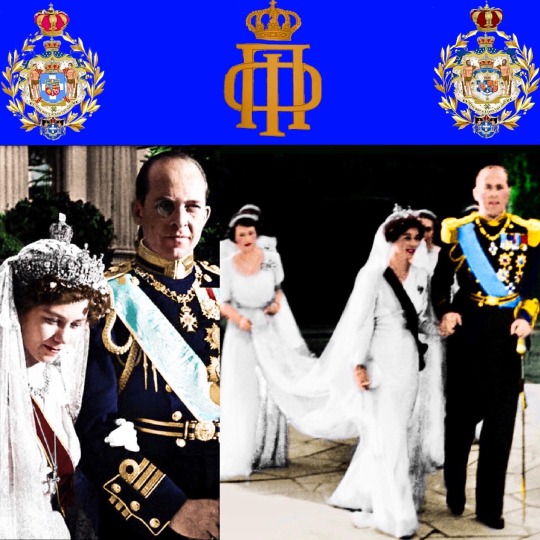
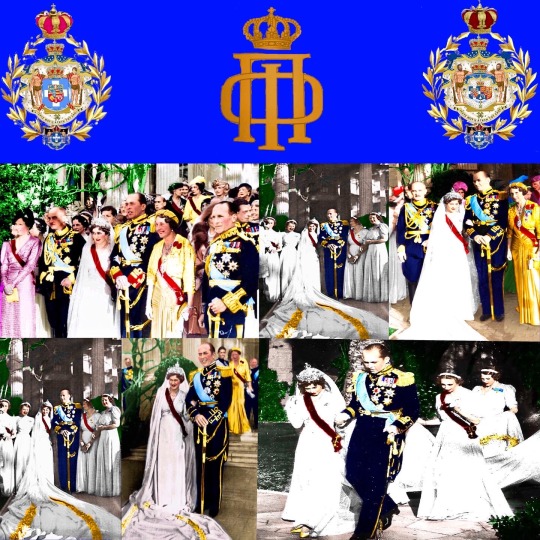




First of all I wish to all a Very Happy 2022
I m sorry that this last month I didn’t post anything but I had some health issues but now I’m finally ok so I’ll will begin 2022 with the
84th anniversary of the wedding of HM King Paul of Hellenes Prince of Denmark and HM Queen Frederica of Hellenes Princess of Denmark Hanover, Great Britain Ireland,and Brunswick-Lüneburg
In the 9th of January 1938 in Athens Greece where King Paul was at the time HRH Crown Prince Paul of Greece Prince of Denmark.
Paul was born on 14 December 1901 at Tatoi Palace in Athens, the third son of King Constantine I of Greece and his wife, Princess Sophia of Prussia. He trained as an army officer at the Royal Military College, Sandhurst and later at the Hellenic Military Academy in Kypseli, Athens. Paul was an army officer cadet in the Coldstream Guards and Lieutenant with the Evzones.
From 1917 to 1920, Paul lived in exile with his father, Constantine I. From 1923 to 1935, he lived in exile again in England, this time with his brother, George II. He worked briefly in an aircraft factory under an alias, and through Viscount Tredegar met and befriended notorious literary muse Denham Fouts, who later alleged an affair.However, Fouts's friend John B. L. Goodwin said Fouts often made up stories about his life,and literary critic Katherine Bucknell thought many of the tales about him were myths.
To his family, he was known as Palo.
Born Her Royal Highness Friederike, Princess of Hanover, Princess of Great Britain and Ireland, and Princess of Brunswick-Lüneburg on 18 April 1917 in Blankenburg am Harz, in the German Duchy of Brunswick, she was the only daughter and third child of Ernest Augustus, then reigning Duke of Brunswick, and his wife Princess Viktoria Luise of Prussia, herself the only daughter of the German Emperor Wilhelm II. Both her father and maternal grandfather abdicated their thrones in November 1918 following Germany's defeat in World War I, and her paternal grandfather was stripped of his British royal dukedom the following year. As a descendant of Queen Victoria, she was, at birth, 64th in the line of succession to the British throne.
In 1934, Adolf Hitler, in his ambition to link the British and German royal houses, asked for Frederica's parents to arrange for the marriage of their seventeen-year-old daughter to the Prince of Wales. In her memoirs, Frederica's mother described that she and her husband were "shattered" and such a possibility "had never entered our minds".Victoria Louise herself had once been considered as a potential bride for the very same person prior to her marriage. Moreover, the age difference was too great (the Prince of Wales was twenty-three years Frederica's senior), and her parents were unwilling to "put any such pressure" on their daughter.
To her family, she was known as Freddie.
Prince Paul of Greece proposed to her during the summer of 1936, while he was in Berlin attending the 1936 Summer Olympics. Paul was a son of King Constantine I and Frederica's great aunt Sophia. Accordingly, they were maternal first cousins once removed. They were also paternal second cousins as great-grandchildren of Christian IX of Denmark. Their engagement was announced officially on 28 September 1937.
They married in Athens on 9 January 1938. Frederica became Hereditary Princess of Greece, her husband being heir presumptive to his childless elder brother, King George II.
During the early part of their marriage, they resided at a villa in Psychiko in the suburbs of Athens. Ten months after their marriage, their first child, the future Queen Sofia of Spain, was born on 2 November 1938. On 2 June 1940, Frederica gave birth to the future King Constantine II.
In 1936, a major event brought together Greece and Germany on a world stage: the Summer Olympics. Held in Berlin, the event was used as propaganda by Hitler’s regime. For the first time, a torch relay was staged between Athens and the host city, and royals like King George II, Crown Prince Paul, King Peter of Yugoslavia, and King Boris of Bulgaria were included in the spectacle. Paul arrived in Berlin in July 1936 and attended the opening ceremony of the games. While in Germany, 34-year-old Crown Prince Paul proposed marriage to 19-year-old Princess Friederike, who was his cousin twice over (first cousins, once removed on their maternal German line, second cousins on their paternal Danish line). She accepted.
The couple’s official engagement announcement was delayed by a year. Greece was in the midst of yet another political upheaval. As Paul was proposing in Germany, his brother and Prime Minister Metaxas were busy installing a totalitarian regime back in Greece, suspending parliament and ushering in a wave of cultural, social, and economic controls. Before publicly announcing their betrothal, Crown Prince Paul also represented his family at the coronation of King George VI and Queen Elizabeth in May 1937 in London. In August, the restless press reported that Paul was secretly engaged — to a wealthy 22-year-old Greek commoner, Catherine Koumandarou. (She vehemently denied the reports. “It isn’t true, any of it,” she told the Associated Press. “It simply didn’t happen. I don’t even know the prince well. I have met him a few times on social occasions, but we certainly have never even talked alone; there is absolutely nothing more than that.”)
In September 1937, Paul flew from Athens to Vienna to join Friederike and her family at their hunting lodge, Schloss Cumberland, in Gmunden. They were there to celebrate their engagement, which was officially announced from Athens on September 29. “A picturesque hunting chalet high in the Upper Austrian Alps houses to-night two happy young people,” one British paper reported breathlessly. In their official engagement portraits, Friederike wore the Prussian Tiara, a gift from her mother, and a diamond necklace.
In November 1937, the wedding date was officially set for January 9, 1938. Because Friederike was born a British princess, and was subject to the Royal Marriages Act of 1772, she had to have permission from King George VI of the United Kingdom to go forward with her marriage. On the day after Christmas 1937, King George convened a fifteen-minute privy council meeting at Sandringham, where the royal family had gathered to celebrate the holiday. In the presence of the Duke of Gloucester, the Duke of Kent, and the Earl of Athlone, the king gave his formal assent to the marriage. The Duke of Kent and his Greek royal wife, Princess Marina, were tapped to officially represent the British royal family at the wedding in Athens. They arrived in the Greek capital on January 7, greeted at the train station by King George II and Prime Minister Metaxas.
As holiday celebrations wound down across Europe, more royals began to gather in Athens for the nuptials. One prince had a particularly harrowing trip to Greece. Crown Prince Michael of Romania, a nephew of Crown Prince Paul, boarded a destroyer, the Queen Maria, in Constanza to sail to Athens. Fifty miles into their journey across the Black Sea, the ship encountered a sudden and terrible winter storm, which left the destroyer floating helplessly without power. The Associated Press reported that “huge waves and chunks of ice broke” over the ship’s decks, breaking a mast, damaging the rudder, and knocking out the radio. A general alarm was raised about the future of the Romanian throne when the ship sent out a distress call. Sixteen-year-old Michael reportedly handled the situation quite bravely, even trying to convince the crew to allow him to help as they worked to save the ship. Ultimately, the future monarch and his entourage shivered in darkness for 36 hours while they waited for another ship to come to their aid. When Michael returned to Constanza, he admitted to his father, King Carol, that he’d been terrified by the entire ordeal, but he quickly boarded a train that took him on to Bucharest and then Athens in time for his uncle’s wedding.
Crown Prince Michael wasn’t the only royal who arrived somewhat emotionally battered for the wedding. Prince Andrew of Greece and Denmark, Crown Prince Paul’s uncle, flew to Athens from Rome for the wedding with his son, Prince Philip, and two of his daughters, Princesses Margarita and Theodora. Six weeks before, the family had buried their daughter and sister, Princess Cecilie, who had died with several members of the Hesse family when their airplane had tragically crashed in Belgium. Prince Nicholas of Greece and Denmark, Andrew’s brother, had represented the royal family at the funeral in Germany. (No one could have known at this point that Nicholas’s days were also short. He died suddenly of a heart attack a month after Paul and Friederike’s wedding.)
In Greece, however, the mood was ebullient ahead of their new princess’s arrival. In Austria, Princess Friederike and her parents and brothers had boarded a special train to Athens which took them through numerous Greek towns and villages along the way. Newspapers reported that “scenes of enthusiasm” greeted the bride all along the way to her new home. In Athens, the train station was decorated elaborately in blue and white, Greece’s national colors, and the streets were festooned with flags and colorful lights. Crown Prince Paul had traveled to the Greek border with Yugoslavia to meet his fiancee aboard the train and travel with her to the capital. The snowstorms that nearly sank Crown Prince Michael delayed the train journey in Macedonia, too, putting them hours behind schedule. But crowds were still present in the freezing cold on January 7, 1938, to cheer the arrival of the train, which was pulled by a bright white engine with the letters P and F emblazoned in gold. As Paul and Friederike stepped on to the platform, a 21-gun salute was fired from Mount Lycabettus.
A whirlwind of celebratory events engulfed the couple as they arrived in Athens. A glittering state dinner was held on the night of Friday, January 7, followed by a second gala dinner and theater performance on Saturday evening. Members of both families had descended on Athens for the festivities. The Greek royal contingent included Crown Prince Paul’s sisters, Princesses Helen, Irene, and Katherine, as well as his nephew and niece, Crown Prince Michael of Romania and Princess Alexandra of Greece. Greek uncles and aunts in attendance included Prince George and Princess Marie (with their children, Princess Peter and Princess Eugenie), the aforementioned-Prince Andrew and his children, and Prince and Princess Nicholas (with their daughters, Princesses Olga, Elizabeth, and Marina, and their husbands, Prince Regent Paul of Yugoslavia, Count Carl Theodor of Toerring-Jettenbach, and the Duke of Kent, respectively). Grand Duke Dmitri Pavlovich, one of Paul’s cousins, was there as well.
The German royal party included Friederike’s parents and brothers, as well as her Prussian uncles, Prince Oskar and Prince August Wilhelm, and her Hanoverian uncles and aunts, the Grand Duke and Grand Duchess of Mecklenburg-Schwerin and the Dowager Margravine of Baden. Berthold, the Margrave of Baden, was there as well; he was married to Crown Prince Paul’s cousin, Princess Theodora of Greece and Denmark. Princes Wilhelm and Hubertus of Prussia were there, too. Two more of her cousins, Princess Cecilie and Princess Herzeleide of Prussia, were among her bridesmaids. (Of course, all of these guests were related to both the bride and groom.) The Danish representatives included Prince Axel, Prince Knud, and Princess Caroline-Mathilde.
On the day of the wedding, Princess Friederike dressed in a gown fit for the grandest ’30s-era bride. The Observer reported that the gown, “made in Munich, is of simple cut, accentuating the beauty of the material, a shimmering silver lame. The eighteen-foot train is ornamented with a circle of applique flowers, also in lame, and is bordered with a roll of self-material which outlines the V neck of the gown and falls away over the shoulders. The sleeves are full length to the wrist.” Her bridal bouquet, a spray of orange blossoms, was a gift from her grandfather, Kaiser Wilhelm, who sent them from the orangery at Doorn. Tucked inside was a sprig of myrtle brought specially from Queen Victoria’s myrtle bush at Osborne House in England for her by the Duchess of Kent.
On her head, Friederike wore her mother’s long lace veil, which was secured with a diamond tiara that had belonged to her late mother-in-law, Queen Sophie of Greece. She also wore the small diamond Hanoverian nuptial crown, which belonged to Queen Charlotte of the United Kingdom and was returned to the Hanoverian royals by Queen Victoria after she lost a legal suit. Friederike’s other bridal jewels included a cross on a long chain and the diamond necklace she wore in her engagement portraits. She also wore the star and sash of the Royal Family Order of Saints Olga and Sophia, which had been created in 1936 by King George II in memory of Queen Olga and Queen Sophie.
It was pouring rain and sleet on the morning of Sunday, January 9, as the guests arrived at the Metropolitan Cathedral in Athens for the first of the couple’s two wedding ceremonies. Newsreel cameras captured the guests, including the Duke and Duchess of Kent and Prince Paul and Princess Olga, hurrying from their cars into the cathedral.
Following Greek Orthodox tradition, they were married by the Archbishop of Athens, who was supported by dozens of bishops in gold and white robes. The couple stood beneath traditional Greek Orthodox wedding crowns during the ceremony, which were held by the groom’s supporters: his uncle, Prince George of Greece and Denmark; his cousin, Grand Duke Dmitri Pavlovich; his nephew, Crown Prince Michael; his cousins, Prince Peter and Prince Philip; and Friederike’s brothers. The crowns were the same ones used at the wedding of Paul’s parents. Friederike was supported by four pink-gowned bridesmaids: her new sister-in-law, Princess Katherine of Greece and Denmark; her husband’s cousin, Princess Eugenie of Greece and Denmark; and two of her German cousins, Princess Cecilie and Princess Herzeleide of Prussia. Paul and Friederike exchanged gold wedding rings made from melted down coins dating to the reign of Alexander the Great.
After the ceremony had finished, Paul and Friederike rode through the rain-soaked streets back to the palace, cheered on by Athenians who had braved the cold, wet weather to see the newlywed couple in person. Back at the palace, the couple had a second, Lutheran wedding ceremony and signed the civil registration
After the wedding, the couple settled in their new villa at Psychiko, a wedding gift from the Greek government. They spent a month-long honeymoon abroad. In November 1938, they welcomed their first child: a daughter who later became Queen Sofia of Spain. Two more children, King Constantine II of Greece and Princess Irene of Greece and Denmark, followed after her. The couple reigned as King and Queen of the Hellenes from 1947 until Paul’s death in1964.
Πρώτα από όλα εύχομαι σε όλους Καλό και Ευτυχισμένο 2022
Λυπάμαι που αυτόν τον τελευταίο μήνα δεν δημοσίευσα τίποτα, αλλά είχα κάποια προβλήματα υγείας, αλλά τώρα είμαι επιτέλους καλά, οπότε θα ξεκινήσω το 2022 με την
84η επέτειο του γάμου της Α.Μ. Βασιλιά Παύλου ��ων Ελλήνων Πρίγκιπα της Δανίας και της ΑΜ Βασίλισσα ��ρειδερίκης των Ελλήνων Πριγκίπισσα της Δανίας του Ανόβερου, της Μεγάλης Βρετανίας Ιρλανδίας και του Brunswick-Lüneburg
Στις 9 Ιανουαρίου 1938 στην Αθήνα, όπου τότε ο Βασιλιάς Παύλος ήταν Η ΑΒΥ Παύλος Πριγκιπας Διάδοχος της Ελλάδος Πρίγκιπας της Δανίας.
Ο Παύλος γεννήθηκε στις 14 Δεκεμβρίου 1901 στα Ανάκτορα Τατοΐου στην Αθήνα, τρίτος γιος του βασιλιά Κωνσταντίνου Α΄ της Ελλάδας και της συζύγου του, πριγκίπισσας Σοφίας της Πρωσίας. Εκπαιδεύτηκε ως αξιωματικός στρατού στο Βασιλικό Στρατιωτικό Κολλέγιο του Σάντχερστ και αργότερα στην Ελληνική Στρατιωτική Ακαδημία στην Κυψέλη της Αθήνας. Ο Παύλος ήταν δόκιμος αξιωματικός του στρατού στις Φρουρές Coldstream και Υπολοχαγός στους Εύζωνες.
Από το 1917 έως το 1920, ο Παύλος έζησε εξόριστος με τον πατέρα του, Κωνσταντίνο Α'. Από το 1923 έως το 1935, έζησε ξανά εξόριστος στην Αγγλία, αυτή τη φορά με τον αδελφό του, Γεώργιο Β'. Εργάστηκε για λίγο σε ένα εργοστάσιο αεροσκαφών με ψευδώνυμο και μέσω του Viscount Tredegar γνώρισε και έγινε φίλος με τη διαβόητη λογοτεχνική μούσα Denham Fouts, η οποία αργότερα ισχυρίστηκε ότι ειχαν σχέση.Ωστόσο, ο φίλος της Fouts John BL Goodwin είπε ότι η Fouts συχνά έφτιαχνε ιστορίες για τη ζωή της η κριτικός λογοτεχνίας Η Κάθριν Μπάκνελ πίστευε ότι πολλές από τις ιστορίες για την Fouts ήταν μύθοι.
Στην οικογένειά του, ο Πριγκιπας Παυλος ήταν γνωστός ως Πάλο.
Η ΑΒΥ , Πριγκίπισσα Φρειδερικη του Ανόβερου, Πριγκίπισσα της Μεγάλης Βρετανίας , Ιρλανδίας και του Brunswick-Lüneburg γεννήθηκε στις 18 Απριλίου 1917 στο Blankenburg am Harz, στο γερμανικό Δουκάτο του Brunswick, ήταν η μοναδική κόρη και το τρίτο παιδί του Ernest Augustus. , ο τότε βασιλεύων δούκας του Μπράνσγουικ και η σύζυγός του, πριγκίπισσα Βικτώρια Λουίζα της Πρωσίας, η ίδια η μόνη κόρη του Γερμανού αυτοκράτορα Γουλιέλμου Β'. Τόσο ο πατέρας όσο και ο παππούς της από τη μητέρα της παραιτήθηκαν από τους θρόνους τους τον Νοέμβριο του 1918 μετά την ήττα της Γερμανίας στον Α' Παγκόσμιο Πόλεμο και ο παππούς της από τον πατέρα της αφαιρέθηκε το βρετανικό βασιλικό δουκάτο του το επόμενο έτος. Ως απόγονος της βασίλισσας Βικτώριας, ήταν, κατά τη γέννησ��, 64η στη σειρά διαδοχής του βρετανικού θρόνου.
Το 1934, ο Αδόλφος Χίτλερ, στη φιλοδοξία του να συνδέσει τον βρετανικό και τον γερμανικό βασιλικό οίκο, ζήτησε από τους γονείς της Φρειδερίκης να κανονίσουν τον γάμο της δεκαεπτάχρονης κόρης τους με τον Πρίγκιπα της Ουαλίας Εδουάρδο που αργότερα αφησε τον Βρετανικό Θρόνο για να παντρεύτει την Γουολις Σίμσον
Στα απομνημονεύματά της, η μητέρα της Φρειδερικης περιέγραψε ότι αυτή και ο σύζυγός της ήταν "θρυμματισμένοι" και ότι μια τέτοια πιθανότητα "δεν είχε μπει ποτέ στο μυαλό μας". Η ίδια η Βικτόρια Λουίζα κάποτε θεωρούνταν πιθανή νύφη για το ίδιο άτομο πριν από τον γάμο της. Επιπλέον, η διαφορά ηλικίας ήταν πολύ μεγάλη (ο πρίγκιπας της Ουαλίας ήταν είκοσι τρία χρόνια μεγαλύτερος της Φρειδερίκης) και οι γονείς της δεν ήταν πρόθυμοι να «ασκήσουν τέτοια πίεση» στην κόρη τους.
Στην οικογένειά της, ήταν γνωστή ως Freddie.
Ο πρίγκιπας Παύλος της Ελλάδας της έκανε πρόταση γάμου το καλοκαίρι του 1936, ενώ βρισκόταν στο Βερολίνο για να παρακολουθήσει τους Θερινούς Ολυμπιακούς Αγώνες του 1936. Ο Παύλος ήταν γιος του βασιλιά Κωνσταντίνου Α' και της μεγάλης θείας της Φρειδερίκης Σοφίας. Ως εκ τούτου, ήταν πρώτα ξαδέρφια με την μητέρα της . Ήταν επίσης πατρικά δεύτερα ξαδέρφια ως δισέγγονα του Christian IX της Δανίας. Ο αρραβώνας τους ανακοινώθηκε επίσημα στις 28 Σεπτεμβρίου 1937 Παντρεύτηκαν στην Αθήνα στις 9 Ιανουαρίου 1938. Η Φρειδερίκη έγινε Πριγκίπισσα Διαδόχου της Ελλάδας, με Διαδοχο τον σύζυγό της υποτίθεται στον άτεκνο μεγαλύτερο αδερφό του, τον βασιλιά Γεώργιο Β'.
Στα πρώτα χρόνια του γάμου τους διέμεναν σε μια βίλα στο Ψυχικό στα προάστια της Αθήνας γνωστή ως Βιλα Φρειδερικη Δέκα μήνες μετά τον γάμο τους, το πρώτο τους παιδί, η μελλοντική βασίλισσα Σοφία της Ισπανίας, γεννήθηκε στις 2 Νοεμβρίου 1938. Στις 2 Ιουνίου 1940, η Φρειδερίκη γέννησε τον μελλοντικό βασιλιά Κωνσταντίνο Β'.
Το 1936, ένα σημαντικό γεγονός έφερε κοντά την Ελλάδα και τη Γερμανία σε μια παγκόσμια σκηνή: οι Θερινοί Ολυμπιακοί Αγώνες. Πραγματοποιήθηκαν στο Βερολίνο, η εκδήλωση χρησιμοποιήθηκε ως προπαγάνδα από το καθεστώς του Χίτλερ. Για πρώτη φορά έγινε λαμπαδηδρομία μεταξύ της Αθήνας και της διοργανώτριας πόλης και μέλη της βασιλικής οικογένειας όπως ο Βασιλιάς Γεώργιος Β', ο διάδοχος του θρόνου Παύλος, ο βασιλιάς Πέτρος της Γιουγκοσλαβίας και ο βασιλιάς Μπόρις της Βουλγαρίας συμπεριλήφθηκαν στο θέαμα. Ο Παύλος έφτασε στο Βερολίνο τον Ιούλιο του 1936 και παρακολούθησε την τελετή έναρξης των αγώνων. Ενώ βρισκόταν στη Γερμανία, ο 34χρονος διάδοχος Παύλος πρότεινε γάμο στη 19χρονη πρ��γκίπισσα Φρειδερικη , η οποία ήταν ανιψια του από τη μητρική γερμανική γραμμή, δεύτερα ξαδέρφια από την πατρική δανική γραμμή. Εκείνη δέχτηκε.
Η επίσημη ανακοίνωση του αρραβώνα του ζευγαριού καθυστέρησε κατά ένα χρόνο. Η Ελλάδα βρισκόταν στη μέση μιας ακόμη πολιτικής αναταραχής. Καθώς ο Παύλος έκανε την πρόταση γάμου στη Γερμανία, ο αδελφός του και ο Πρωθυπουργός Μεταξάς ήταν απασχολημένοι με την εγκατάσταση ενός ολοκληρωτικού καθεστώτος πίσω στην Ελλάδα, αναστέλλοντας το κοινοβούλιο και εγκαινιάζοντας ένα κύμα πολιτιστικών, κοινωνικών και οικονομικών ελέγχων. Πριν ανακοινώσει δημόσια τον αρραβώνα τους, ο διάδοχος Παύλος εκπροσώπησε επίσης την οικογένειά του στη στέψη του Βασιλιά Γεωργίου ΣΤ' και της Βασίλισσας Ελισάβετ τον Μάιο του 1937 στο Λονδίνο. Τον Αύγουστο, ο ανήσυχος Τύπος ανέφερε ότι ο Παύλος ήταν κρυφά αρραβωνιασμένος — με μια πλούσια 22χρονη Ελληνίδα , την Αικατερίνη Κουμαντάρου. (Αρνήθηκε κατηγορηματικά τις αναφορές. "Δεν είναι αλήθεια, τίποτα από όλα αυτά", είπε στο Associated Press. "Απλώς δεν συνέβη. Δεν ξέρω καν τον πρίγκιπα καλά. Τον έχω συναντήσει μερικές φορές σε κοινωνικές περιστάσεις, αλλά σίγουρα δεν έχουμε μιλήσει ποτέ μόνοι μας· δεν υπάρχει απολύτως τίποτα περισσότερο από αυτό.)
Τον Σεπτέμβριο του 1937, ο Παύλος πέταξε από την Αθήνα στη Βιέννη για να βρεθεί με τη Φρειδερικη και την οικογένειά της στο κυνηγετικό τους καταφύγιο, Schloss Cumberland, στο Gmunden. Ήταν εκεί για να γιορτάσουν τον αρραβώνα τους, ο οποίος ανακοινώθηκε επίσημα από την Αθήνα στις 29 Σεπτεμβρίου. «Ένα γραφικό κυνηγετικό σαλέ ψηλά στις Άνω Αυστριακές Άλπεις φιλοξενεί απόψε δύο χαρούμενους νέους», ανέφερε μια βρετανική εφημερίδα με κομμένη την ανάσα. Στα επίσημα πορτρέτα του αρραβώνα τους, η Φρειδερικη φορούσε την Πρωσική Τιάρα, δώρο από τη μητέρα της, και ένα διαμαντένιο κολιέ.
Τον Νοέμβριο του 1937, η ημερομηνία του γάμου ορίστηκε επίσημα για τις 9 Ιανουαρίου 1938. Επειδή η Φρειδερικη γεννήθηκε ως Βρετανίδα πριγκίπισσα και υπόκειται στον νόμο περί βασιλικών γάμων του 1772, έπρεπε να έχει άδεια από τον βασιλιά Γεωργίου Στ’ Ηνωμένου Βασιλείου για να προχωρησει με τον γάμο της. Την επομένη των Χριστουγέννων του 1937, ο Βασιλιάς Γεώργιος συγκάλεσε μια δεκαπεντάλεπτη μυστική συνεδρίαση του συμβουλίου στο Sandringham, όπου η βασιλική οικογένεια είχε συγκεντρωθεί για να γιορτάσει τις διακοπές. Παρουσία του Δούκα του Γκλόστερ, του Δούκα του Κεντ και του κόμη του Άθλον, ο βασιλιάς έδωσε την επίσημη συγκατάθεσή του στον γάμο. Ο δούκας του ��εντ και η Ελληνίδα βασιλική σύζυγός του, πριγκίπισσα Μαρίνα, επιλέχθηκαν να εκπροσωπήσουν επίσημα τη βρετανική βασιλική οικογένεια στον γάμο στην Αθήνα. Έφτασαν στην ελληνική πρωτεύουσα στις 7 Ιανουαρίου, ενώ στο σιδηροδρομικό σταθμό τους υποδέχτηκαν ο βασιλιάς Γεώργιος Β' και ο πρωθυπουργός Μεταξάς.
Καθώς οι γιορτές σταματούσαν σε όλη την Ευρώπη, περισσότεροι Εστεμμένοι άρχισαν να συγκεντρώνονται στην Αθήνα για τους γάμους. Ένας πρίγκιπας είχε ένα ιδιαίτερα οδυνηρό ταξίδι στην Ελλάδα. Ο διάδοχος της Ρουμανίας Μιχαήλ, ανιψιός του διαδόχου Παύλου, επιβιβάστηκε σε ένα αντιτορπιλικό, το Queen Maria, στην Κωνστάντζα για να πλεύσει στην Αθήνα. Πενήντα μίλια μετά το ταξίδι τους στη Μαύρη Θάλασσα, το πλοίο συνάντησε μια ξαφνική και τρομερή χειμερινή καταιγίδα, η οποία άφησε το αντιτορπιλικό να επιπλέει αβοήθητο χωρίς ρεύμα. Το Associated Press ανέφερε ότι «τεράστια κύματα και κομμάτια πάγου έσπασαν» πάνω από τα καταστρώματα του πλοίου, έσπασαν έναν ιστό, προκάλεσαν ζημιά στο πηδάλιο και χτυπώντας το ραδιόφωνο. Ένας γενικός συναγερμός σήμανε για το μέλλον του ρουμανικού θρόνου όταν το πλοίο έστειλε κλήση κινδύνου. Ο δεκαεξάχρονος Μιχάηλ φέρεται να χειρίστηκε την κατάσταση αρκετά γενναία, προσπαθώντας μάλιστα να πείσει το πλήρωμα να του επιτρέψει να βοηθήσει καθώς προσπαθούσαν να σώσουν το πλοίο. Τελικά, ο μελλοντικός μονάρχης και η συνοδεία του έτρεμαν στο σκοτάδι για 36 ώρες ενώ περίμεναν ένα άλλο πλοίο να έρθει να τους βοηθήσει. Όταν ο Μιχαήλ επέστρεψε στην Κωνστάντζα, παραδέχτηκε στον πατέρα του, Βασιλιά Κάρολο , ότι είχε τρομοκρατηθεί από όλη τη δοκιμασία, αλλά γρήγορα επιβιβάστηκε σε ένα τρένο που τον μετέφερε στο Βουκουρέστι και μετά στην Αθήνα εγκαίρως για τον γάμο του θείου του.
Ο διάδοχος του θρόνου Μιχάηλ δεν ήταν ο μόνος βασιλιάς που έφτασε κάπως συναισθηματικά χτυπημένος για τον γάμο. Ο πρίγκιπας Ανδρέας της Ελλάδας και της Δανίας, θείος του διαδόχου Παύλου, πέταξε στην Αθήνα από τη Ρώμη για τον γάμο ,με τον γιο του, πρίγκιπα Φίλιππο, και τις δύο από τις κόρες του, τις πριγκίπισσες Μαργαρίτα και Θεοδώρα. Έξι εβδομάδες πριν, η οικογένεια είχε θάψει την κόρη και την αδερφή της, την πριγκίπισσα Κεκελια , η οποία είχε πεθάνει με πολλά μέλη της οικογένειας της Έσσης όταν το αεροπλάνο τους συνετρίβη τραγικά στο Βέλγιο. Ο πρίγκιπας Νικόλαος της Ελλάδας και της Δανίας, ο αδερφός του Ανδρέα, είχε εκπροσωπήσει τη βασιλική οικογένεια στην κηδεία στη Γερμανία. (Κανείς δεν μπορούσε να ξέρει σε αυτό το σημείο ότι οι μέρες του Νικόλαου ήταν επίσης σύντομες.
Πέθανε ξαφνικά από καρδιακή προσβολή ένα μήνα μετά τον γάμο του Παύλου και της Φρειδερίκης.)
Στην ��λλάδα, ωστόσο, η διάθεση ήταν σε έξαρση πριν από τον ερχομό της νέας τους πριγκίπισσας. Στην Αυστρία, η πριγκίπισσα Φρειδερικη και οι γονείς και τα αδέρφια της είχαν επιβιβαστεί σε ένα ειδικό τρένο για την Αθήνα, το οποίο τους μετέφερε σε πολλές ελληνικές πόλεις και χωριά στη διαδρομή. Οι εφημερίδες ανέφεραν ότι «σκηνές ενθουσιασμού» υποδέχτηκαν τη νύφη σε όλη τη διαδρομή προς το νέο της σπίτι. Στην Αθήνα, ο σιδηροδρομικός σταθμός ήταν περίτεχνα διακοσμημένος με μπλε και άσπρο, τα εθνικά χρώματα της Ελλάδας, και οι δρόμοι ήταν στολισμένοι με σημαίες και πολύχρωμα φώτα. Ο διάδοχος Παύλος είχε ταξιδέψει στα ελληνικά σύνορα με τη Γιουγκοσλαβία για να συναντήσει την αρραβωνιαστικιά του στο τρένο και να ταξιδέψει μαζί της στην πρωτεύουσα. Οι χιονοθύελλες που παραλίγο να βυθίσουν τον διάδοχο του θρόνου Μιχαήλ καθυστέρησαν το ταξίδι με το τρένο και στη Μακεδονία, με αποτέλεσμα να καθυστερήσουν ώρες. Αλλά τα πλήθη ήταν ακόμα παρόντα στο παγωμένο κρύο στις 7 Ιανουαρίου 1938, για να επευφημήσουν την άφιξη του τρένου, το οποίο το έσερνε μια φωτεινή λευκή μηχανή με τα γράμματα Π και Φ με χρυσό. Καθώς ο Παύλος και η Φρειδερικη ανέβηκαν στην εξέδρα, ένας χαιρετισμός με 21 όπλα εκτοξεύτηκε από το όρος Λυκαβηττό.
Στρόβιλος εορταστικών εκδηλώσεων κατέκλυσε το ζευγάρι κατά την άφιξή του στην Αθήνα. Ένα λαμπερό κρατικό δείπνο πραγματοποιήθηκε το βράδυ της Παρασκευής 7 Ιανουαρίου και ακολούθησε δεύτερο εορταστικό δείπνο και θεατρική παράσταση το βράδυ του Σαββάτου. Μέλη και των δύο οικογενειών είχαν κατέβει στην Αθήνα για τις γιορτές. Η Ελληνικη Βασιλική απόσπασμα περιελάμβανε τις αδερφές του διαδόχου Παύλου, τις πριγκίπισσες Ελένη, Ειρήνη και Αικατερίνη, καθώς και τον ανιψιό και την ανιψιά του, διάδοχο Μιχαήλ της Ρουμανίας και την πριγκίπισσα Αλεξάνδρα της Ελλάδας και Δανιας μετέπειτα Βασίλισσα Αλεξάνδρα της Γιουγκοσλαβίας
Οι Έλληνες θείοι και θείες που παρευρέθηκαν περιελάμβαναν τον Πρίγκιπα Γεώργιο και την Πριγκίπισσα Μαρία (με τα παιδιά τους, την ΠριγκίπαΠέτρο και την Πριγκίπισσα Ευγενία), τον προαναφερθέντα Πρίγκιπα Ανδρέα και τα παιδιά του και τον Πρίγκιπα και την Πριγκίπισσα Νικόλαου (με τις κόρες τους, τις πριγκίπισσες Όλγα, Ελισάβετ και Μαρίνα , και τους συζύγους τους, τον πρίγκιπα Αντιβασιλέα Παύλο της Γιουγκοσλαβίας, τον κόμη Καρλ Θεόδωρο του Toerring-Jettenbach και τον Δούκα του Κεντ, αντίστοιχα). Ο μεγάλος δούκας Ντμίτρι Πάβλοβιτς, ένας από τους ξαδέρφους του Παύλου, ήταν επίσης εκεί.
Η Γερμανική Βασιλική οικογένεια περιελάμβανε τους γονείς και τα αδέρφια της Φρειδερικης , καθώς και τους Πρώσους θείους της, τον πρίγκιπα Όσκαρ και τον πρίγκιπα August Wilhelm, και τους θείους και θείες της από το Αννόβερο, τον Μέγα Δούκα και τη Μεγάλη Δούκισσα του Mecklenburg-Schwerin και την Dowager Margravine of Baden. Ο Μπέρθολντ, ο Μαργράβος του Μπάντεν, ήταν επίσης εκεί. Ήταν παντρεμένος με τ��ν ξαδέρφη του διαδόχου Παύλου, την πριγκίπισσα Θεοδώρα της Ελλάδας και της Δανίας. Οι πρίγκιπες Wilhelm και Hubertus της Πρωσίας ήταν επίσης εκεί. Δύο ακόμη ξαδέρφια της, η πριγκίπισσα Σεσίλι και η πριγκίπισσα Ερζελεΐδα της Πρωσίας, ήταν μεταξύ των παρανυμφών της. (Φυσικά, όλοι αυτοί οι καλεσμένοι είχαν σχέση και με τη νύφη και τον γαμπρό.) Οι Δανοί εκπρόσωποι περιλάμβαναν τον Πρίγκιπα Άξελ, τον Πρίγκιπα Κνουντ και την Πριγκίπισσα Καρολάιν-Ματθίλδη.
Την ημέρα του γάμου, η πριγκίπισσα Φρειδερικη ντύθηκε με ένα φόρεμα που ταιριάζει στην πιο μεγαλειώδη νύφη της δεκαετίας του '30. Το Observer ανέφερε ότι το φόρεμα, «κατασκευασμένο στο Μόναχο, είναι απλής κοπής, τονίζοντας την ομορφιά του υλικού, ένα αστραφτερό ασημί κεντημα Η ουρά του 5 μισι μέτρων είναι διακοσμημένο με έναν κύκλο απλικέ λουλουδιών, επίσης λαμέ, και οριοθετείται με ένα ρολό από υλικό που σκιαγραφεί τον λαιμό V και πέφτει πάνω από τους ώμους. Τα μανίκια είναι μέχρι τον καρπό». Η νυφική της ανθοδέσμη, από άνθη πορτοκαλιάς, ήταν δώρο από τον παππού της, Κάιζερ Γουλιέλμος , ο οποίος τους τα έστειλε από το πορτοκαλί στο Ντόρν. Κρυμμένο μέσα ήταν ένα κλαδάκι μυρτιάς που έφερε ειδικά από τον θάμνο μυρτιάς της Βασίλισσας Βικτώριας στο Osborne House στην Αγγλία για εκείνη η Δούκισσα του Κεντ.
Στο κεφάλι της, η Φρειδερικη φορούσε το μακρύ δαντελένιο πέπλο της μητέρας της, το οποίο ήταν ασφαλισμένο με μια διαμαντένια τιάρα που ανήκε στην αείμνηστη πεθερά της, βασίλισσα Σοφία της Ελλάδας. Φόρεσε επίσης το μικρό διαμαντένιο στέμμα του γάμου του Ανόβερου, το οποίο ανήκε στη βασίλισσα Σάρλοτ του Ηνωμένου Βασιλείου και επιστράφηκε στα βασιλικά του Ανόβερου από τη βασίλισσα Βικτώρια αφού έχασε μια νομική αγωγή. Τα άλλα νυφικά κοσμήματα της Φρειδερικης περιελάμβαναν έναν σταυρό σε μια μακριά αλυσίδα και το διαμαντένιο κολιέ που φορούσε στα πορτρέτα του αρραβώνα της. Φορούσε επίσης το αστέρι και το φύλλο του του Βασιλικού Οικογενειακού Τάγματος των Αγίων Όλγας και Σοφίας, το οποίο είχε δημιουργηθεί το 1936 από τον Βασιλιά Γεώργιο Β' στη μνήμη της βασίλισσας Όλγας και της βασίλισσας Σοφίας.
Το πρωί της Κυριακής 9 Ιανουαρίου έπεφτε καταρρακτώδης βροχή και χιονόνερο, καθώς οι καλεσμένοι έφτασαν στον Μητροπολιτικό Καθεδρικό Ναό στην Αθήνα για την πρώτη από τις δύο γαμήλιες τελετές του ζευγαριού. Οι κάμερες του Newsreel απαθανάτισαν τους καλεσμένους, μεταξύ των οποίων ο Δούκας και η Δούκισσα του Κεντ και ο Πρίγκιπας Παύλος και η Πριγκίπισσα Όλγα, να βιάζονται από τα αυτοκίνητά τους στον καθεδρικό ναό.
Ακολουθώντας την ελληνορθόδοξη παράδοση, παντρεύτηκαν από τον Αρχιεπίσκοπο Αθηνών, τον οποίο συμπαραστάθηκαν δεκάδες επίσκοποι με χρυσά και λευκά ά��φια. Το ζευγάρι στάθηκε κάτω από τα παραδοσιακά Βασιλικά Στέμματα των ελληνορθόδοξων γάμων κατά τη διάρκεια της τελετής, κρατούσαν εναλλάξ οι κουμπαροι του γαμπρού: ο θείος του, Πρίγκιπας Γεώργιος της Ελλάδας και της Δανίας. ο ξάδερφός του, Μέγας Δούκας Ντμίτρι Πάβλοβιτς· ο ανιψιός του, ο διάδοχος του θρόνου Μιχαήλ· τα ξαδέρφια του, ο πρίγκιπας Πέτρος και ο πρίγκιπας Φίλιππος. και τα αδέρφια της Φρειδερικης . Τα Στέμματα ήταν τα ίδια που χρησιμοποιήθηκαν στον γάμο των γονιών του Παύλου. Η Φρειδερικη υποστηρίχθηκε από τέσσερις παράνυμφους: τη νέα της κουνιάδα, την πριγκίπισσα Αικατερινη της Ελλάδας και της Δανίας. η ξαδέρφη του συζύγου της, η πριγκίπισσα Ευγενία της Ελλάδας και της Δανίας· και δύο από τις γερμανίδες ξαδέρφες της, την πριγκίπισσα Cecilie και την πριγκίπισσα Herzeleide της Πρωσίας. Ο Παύλος και η Φρειδερίκη αντάλλαξαν χρυσές βέρες από λιωμένα νομίσματα που χρονολογούνται από τη βασιλεία του Μεγάλου Αλεξάνδρου.
Αφού τελείωσε η τελετή, ο Παύλος και η Φρειδερίκη διέσχισαν τους βροχερούς δρόμους και επέστρεψαν στο παλάτι, επευφημούμενοι από Αθηναίους που είχαν αντέξει τον κρύο, υγρό καιρό για να δουν το νεόνυμφο ζευγάρι από κοντά. Πίσω στο παλάτι, το ζευγάρι έκανε μια δεύτερη, Λουθηρανική γαμήλια τελετή και υπέγραψε στον ληξίαρχο.
Μετά το γάμο, το ζευγάρι εγκαταστάθηκε στη νέα του βίλα στο Ψυχικό, ένα γαμήλιο δώρο από την ελληνική κυβέρνηση. Πέρασαν ένα μήνα του μέλιτος στο εξωτερικό. Τον Νοέμβριο του 1938, καλωσόρισαν το πρώτο τους παιδί: μια κόρη που αργότερα έγινε βασίλισσα Σοφία της Ισπανίας. Ακολούθησαν άλλα δύο παιδιά, ο βασιλιάς της Ελλάδας Κωνσταντίνος Β' και η πριγκίπισσα Ειρήνη της Ελλάδας και της Δανίας. Το ζευγάρι βασίλεψε ως Βασιλιάς και Βασίλισσα των Ελλήνων από το 1947 μέχρι το θάνατο του Παύλου το 1964.
#kingconstantine#danishroyalfamily#crownprincepavlos#queenannemarie#greek royal family#house of romanov#greekroyals#crownprincessmariechantal#danishroyals#princeconstantinealexios#princessmariaolympia#princeachileasandreas#princenikolaos#princesstatiana#princessmarieolympia#princess theodora#princesseirini#princessnina#princearistidesstavros#princefilippos#princessalexia
3 notes
·
View notes
